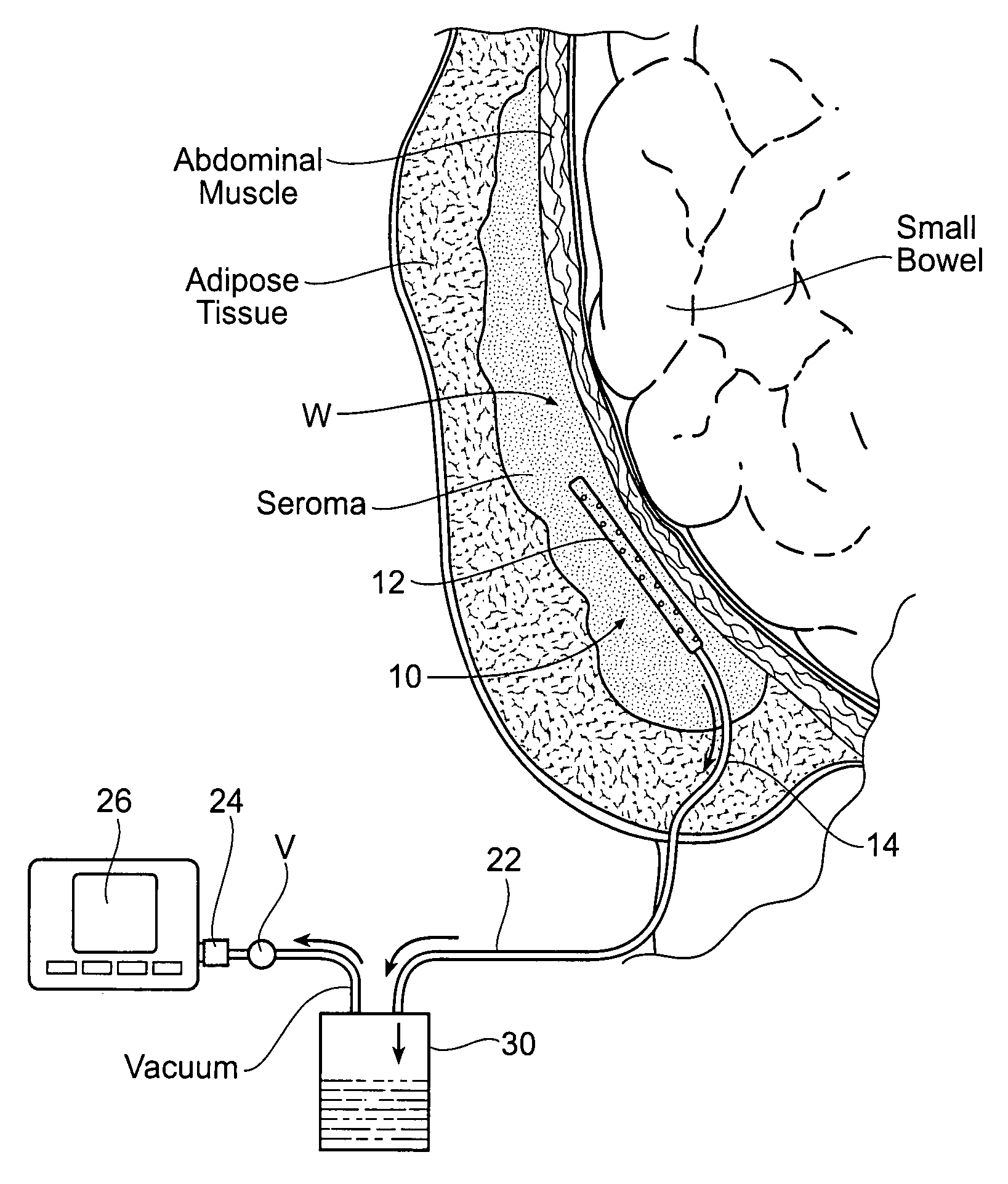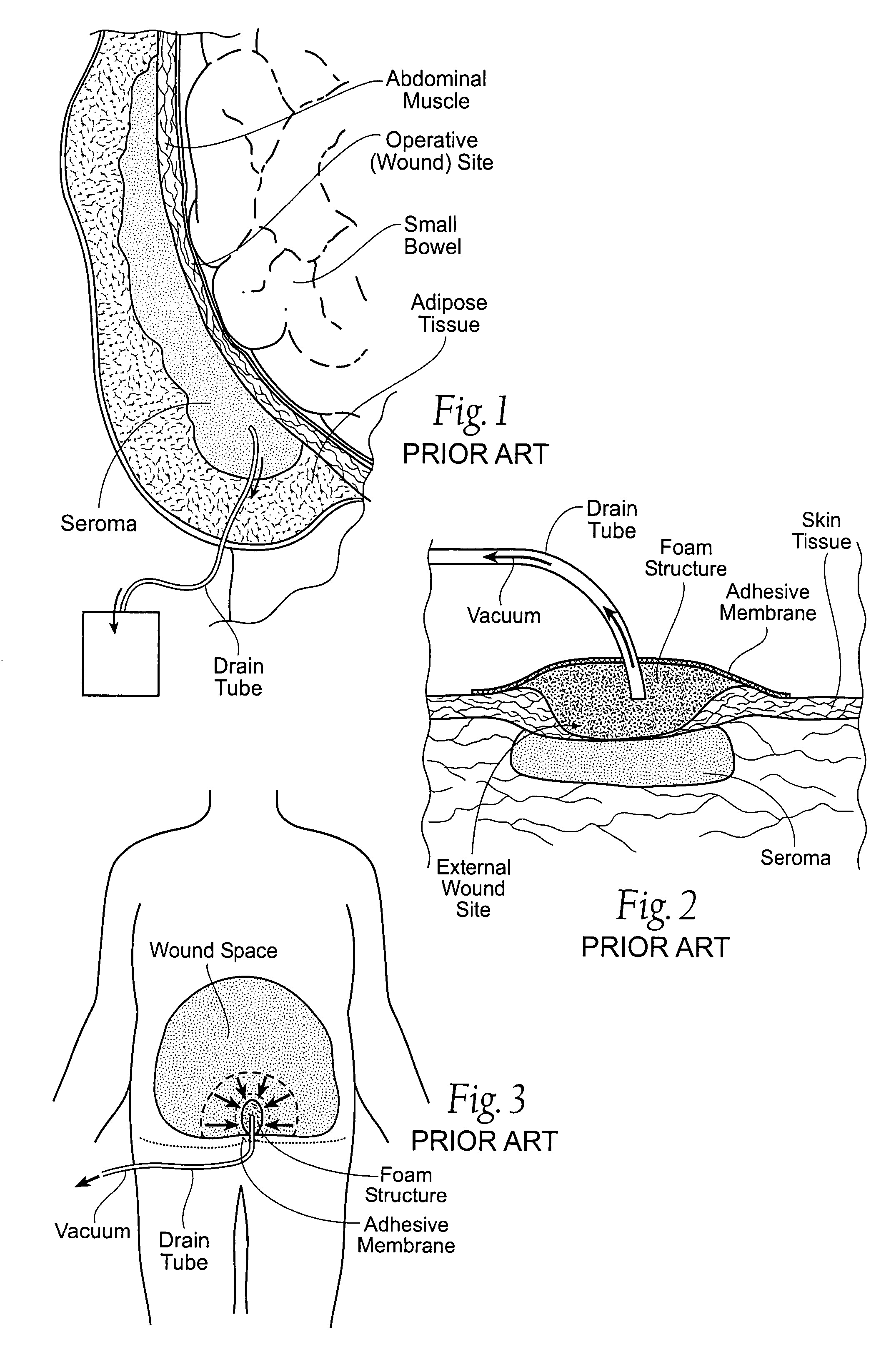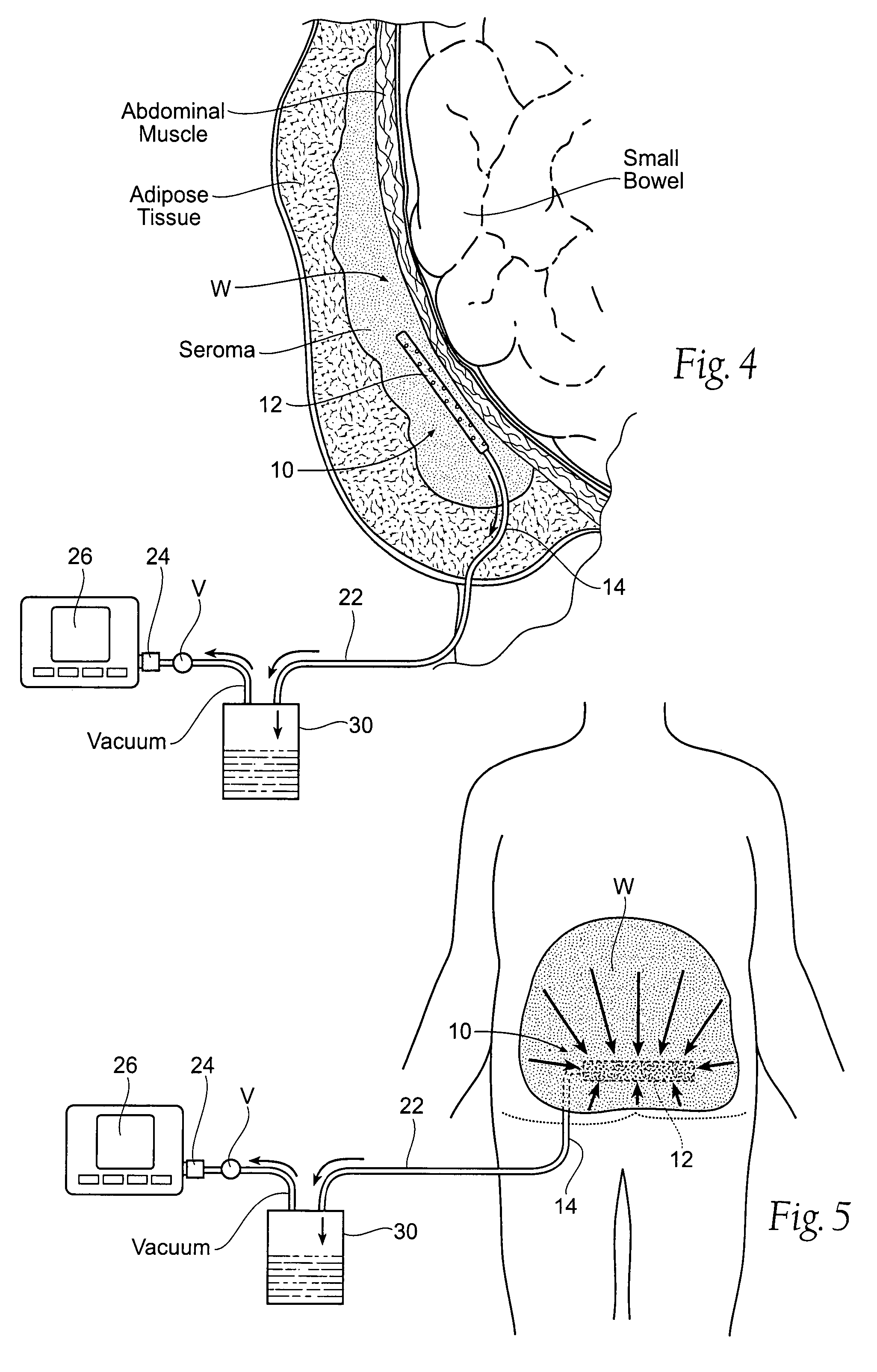Assemblies, systems, and methods for vacuum assisted internal drainage during wound healing
a vacuum assisted and internal drainage technology, applied in the direction of wound drains, suction devices, intravenous devices, etc., can solve the problems of significant loss of patients' income, tissue damage, cellular death, etc., to reduce the “dead-space” or open area, improve wound healing benefits, and reduce the swelling of the overlying and underlying tissue.
- Summary
- Abstract
- Description
- Claims
- Application Information
AI Technical Summary
Benefits of technology
Problems solved by technology
Method used
Image
Examples
Embodiment Construction
[0038]Although the disclosure hereof is detailed and exact to enable those skilled in the art to practice the invention, the physical embodiments herein disclosed merely exemplify the invention that may be embodied in other specific structure. While the preferred embodiment has been described, the details may be changed without departing from the invention, which is defined by the claims.
[0039]FIG. 4 shows a wound drainage system 10 comprising an internal drain assembly 12 that is sized and configured for surgical placement within a wound area W (or body cavity). The wound area W may be anywhere in a human or animal, e.g., within a body cavity, or beneath the skin, or in muscle, or within the soft tissues. As will be described in greater detail later (see FIG. 6), the internal drain assembly 12 includes a housing 18 that encloses a foam sponge component 16. The foam sponge component 16 communicates with the wound area W through one or more apertures 20 formed in the housing 18.
[0040...
PUM
 Login to View More
Login to View More Abstract
Description
Claims
Application Information
 Login to View More
Login to View More - R&D
- Intellectual Property
- Life Sciences
- Materials
- Tech Scout
- Unparalleled Data Quality
- Higher Quality Content
- 60% Fewer Hallucinations
Browse by: Latest US Patents, China's latest patents, Technical Efficacy Thesaurus, Application Domain, Technology Topic, Popular Technical Reports.
© 2025 PatSnap. All rights reserved.Legal|Privacy policy|Modern Slavery Act Transparency Statement|Sitemap|About US| Contact US: help@patsnap.com



